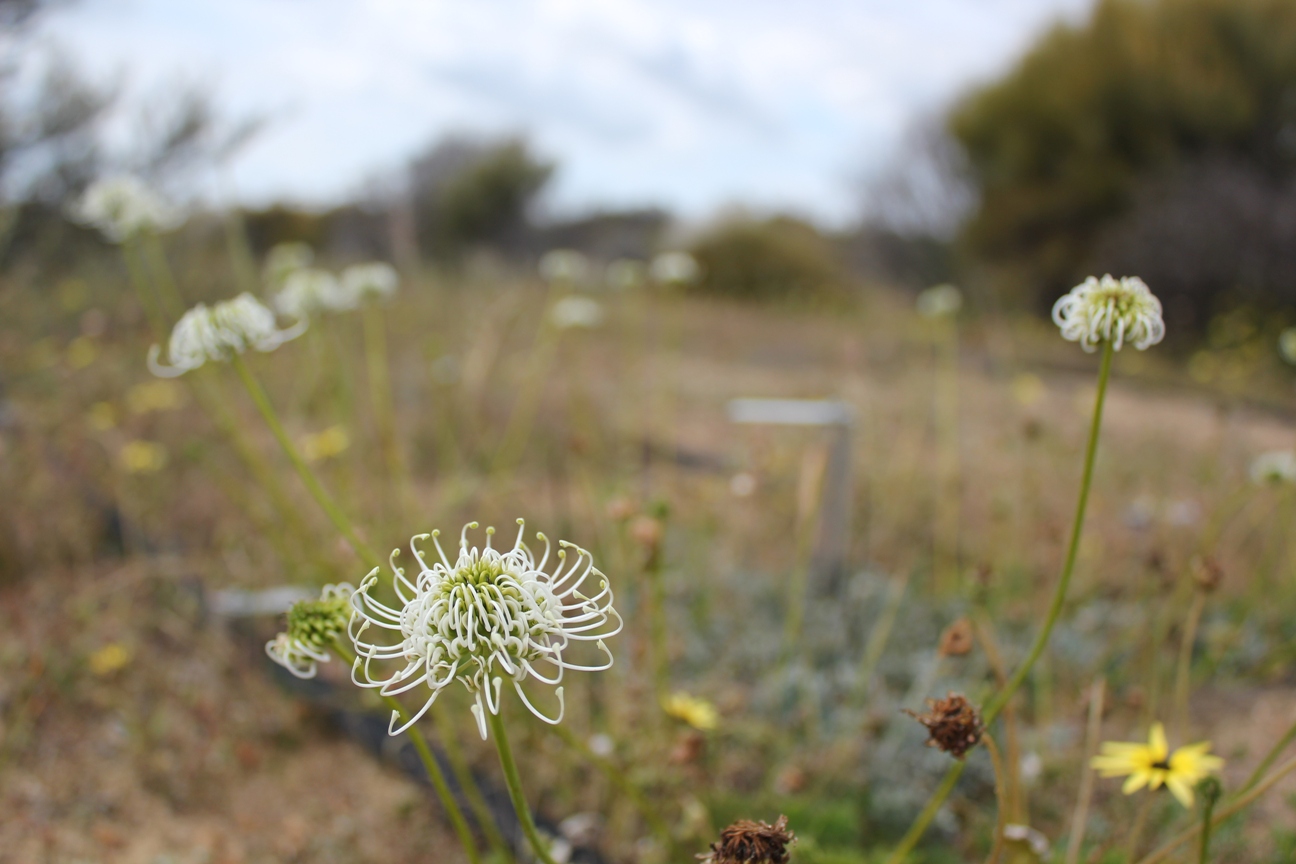The Corrigin Grevillea (Grevillea scapigera) is an endangered species found in the Wheatbelt of Western Australia.
While 95% of its original habitat has been cleared for agriculture, it still survives in a 40km range around Corrigin – between Quairading, Bruce Rock, Kondinin and Corrigin – plus an unconfirmed population reported near Hyden.
The grevillea was first collected near Corrigin in 1954 and was described as a new species twenty years later. In 1986, the last known wild plant died leading to speculation of its extinction. When a grafted specimen was found in Sydney’s Royal Botanic Gardens plant material was harvested and tissue cultured by Kings Park in Perth. Specimens were then returned to the wild with eventual success at three translocation sites in the Wheatbelt.
The Corrigin Grevillea is a low growing shrub reaching 5-10cm high that occurs naturally in heathland amongst low myrtaceae and proteaceae scrub. It is known to exist in 13 wild populations on highly degraded, narrow road verges. It grows up to two metres across and has creamy white flowers that are round and sweetly scented, on 30cm long stems. Over 1000 flowers have been recorded on one 1.5m wide plant!
The flowers have abundant nectar and are pollinated by wasps, bees, ants, moths and butterflies. They produce a fruiting body about 1.5cm long that contain light brown to grey/mottled seeds. The colouring of its seeds may help reduce their visibility to seed eating animals such as looper caterpillars, weevils and parrots. The seeds have a high viability and can remain in the seed bank for up to four or more years.
Flowering usually occurs between October/November, although flowers have been recorded in February. It also flowers after a good rain, so drought years are problematic with the plant either not flowering, or producing very little seed.
As an opportunistic species, seed germination relies on soil disturbance which was naturally provided by creatures such as woylies digging the soil. Ants could also be very important in the distribution and germination of seeds, but more research needs to be done in this area. Seedlings and seed germination have been recorded in areas disturbed by grading, animals diggings and fire.
The Corrigin Grevillea is relatively short lived, living between 7-9 years. Interestingly, while fire stimulates germination of seed, adult plants are killed by fire. Seedlings take at least one year to flower, but drought conditions can extend this. Seeds do not need smoke to germinate.
Population threats include:
- restricted and fragmented habitat
- lack of disturbance
- road maintenance
- seed and fruit predation
- accidental damage
- weed invasion and competition
- grazing
- low genetic diversity
- fertilizer and herbicide drift
- salinity


